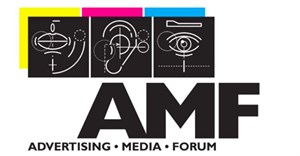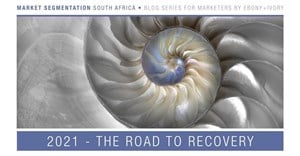
AMPS is now officially dead

Many years ago when I started as a media planner at VZ in Johannesburg (owned by Ogilvy & Mather) I was thrilled to be put onto the SFW team. My portfolio was mainly low-priced wines and Bols Liqueurs.
Apart from being a BIG job, it also meant I had to fly to Cape Town just about every week, where I'd have meetings with many luminaries including John Lapping (R.I.P), Jurgen Burmeister (R.I.P) and dozens of others.
There were three agencies working on their business. JWT (Cape Town), Farquhar & Amis (Cape Town) and us (Johannesburg).
Under the mentorship of John Turvey (R.I.P) and guidance from Jeff Schur, Tim Elliot (R.I.P) and Nic Tredoux (R.I.P), I used to spend many, many hours putting media plans together. I also spent as much time as possible hanging onto every word Nic said because he was a creative genius, you know.
We also had a lot of fun – mainly at the Lanzerac Hotel in Stellenbosch every Thursday night.
The observant reader will note that most of the people I worked with then are now, ironically, dead. I say ironic because most of their groundbreaking approaches have also passed on.
The pitch
On one occasion, all three agencies had to pitch (in the same room, in front of each other) regarding how we intended to use the entire SFW radio holding. Of course, none of us were ever going to get all the spots available, but it was a peculiarity of Burmeister that this was how it was going to be done. No debate and do what you're told. I think he got some dictatorial pleasure out of seeing all three agencies squirm.
I worked on my plan for about two months and ended up with a document that must have weighed about 3kg.
The only reliable research we had was the National Readership Survey (the forerunner to AMPS) so my document was full of graphs and analyses.
There was other research available but they were produced mainly by individual radio stations and publishers and whilst I wouldn't go so far as to say they were biased, let's just say you needed to stretch your imagination a bit to believe them.
So the game began. JWT went first and, I must say, I was quite impressed with their depth of analysis. Then it was my turn and I knew I'd beaten the previous guy because I had so much more “substantiation” but I still wasn't certain because next up was Farquhar and, as my hero, I thought him to be formidable.
I did my turn and Burmeister treated us all to that thin-lipped smile saying “and you, Farquhar?”
Two-pager
John reached into his briefcase and produced a two-page document and slid it across the German's desk. “That's my proposal.” I couldn't believe it.
Burmeister, to give him his due credit, looked at the “document” and asked “what is your back-up for this recommendation?”
John leaned back in his chair, crossed his hands on his (not insignificant) belly and said “gut feel, Jurgen”.
And that was that. Farquhar & Amis got first dibs at the radio holding and the remaining two agencies had to take what we were given.
The reason I mention this is that, then, experience and a solid understanding of media (quite often missing, or difficult to find these days) was the number one requirement. Okay granted, there were fewer media options in those days but, on the other hand, the research wasn't very sophisticated either. But clearly John had more clout.
So there you have it, Farquhar knew the media and Burmeister knew his target markets. Hey presto!
Annoyed consumers
We've come a long way since then and, parallel to the increase in media options, our research became incredibly sophisticated. At one stage South Africa had the best, I mean the best, audience measurement tool in the world. We were the envy of everyone.
Then the wheels fell off.
Media owners started arguing about who was getting more bang for their buck. Media planners (now known as “media strategists”) wanted more information on advertising delivery to the various markets (including the iniquitous LSMs). Everyone argued in meetings at the SAARF (R.I.P) offices - and council discussions became something of a joke. I resigned all my council seats out of boredom and frustration.
And so AMPS came to an end (R.I.P) and the industry unanimously scratched its head and said “what now?”
By the way, consumers are becoming increasingly annoyed at the amounts of money they have to pay to watch Multichoice/DStv and, from time to time, you see calls on social media for everyone to cancel their subscriptions. Typically they say “the fees go up by 10% and we still mostly see the same repeats” or words to that effect. Some (previously institutional) newspapers are being dismissed as being “too political” so media is facing attacks from several sides, including radio, television, outdoor and peripheral media – but I'll be discussing that another time.
SA's media research future
Several well-known commentators came out with their opinions. Gordon Patterson, for whom I have considerable respect, was the first (that I saw anyway) to leap out of the starting blocks. He desperately tried to put a positive spin on the future but the main problem I have with his points is that he believes the AMF and MASA have a real say in what should, and will, happen – which is stretching things a bit far. I suspect that is not where the power base will be.
Just about everybody's had a go at saying something about the future of research we need. And I'm positive there will be more clashes about this.
But in my book, Clare O'Neil is the smartest one in the ring. At least she calls a spade a spade and she appears to be delighted with the new TAMS service. If I had to vote for an “overseer” of the future of media research in South Africa it would be for her.
Also on the plus side, there are some really clever people in the industry. People like Neil Higgs and Erik du Plessis, for example. Provided they all pull together, the risk of another abortive SAARF will be considerably lessened.
The real problem is that the budget is going to be smaller. Therefore there will be cuts in survey coverage, meaning a smaller sample size. This, in turn, means the “new” AMPS (out of the “Establishment Survey”) will be less reliable and/or with a lesser number of categories (data).
The only way forward, if the industry wants more, is simply that it will have to pay more. My concern is that they won't and will rather opt for different research options until we're right back where we began and confusion would have ruled – but didn't because John Farquhar's belly and Jurgen Burmeister's dictatorship were there. This time around we might not be so lucky.
Whatever happens, it's going to be an interesting couple of years for the research industry. Maybe Harry Herber can be persuaded to come out of retirement?
Read my blog (brewersdroop.co.za) or see what other amazing things we do at brewers.co.za
*Note that Bizcommunity staff and management do not necessarily share the views of its contributors - the opinions and statements expressed herein are solely those of the author.*


















